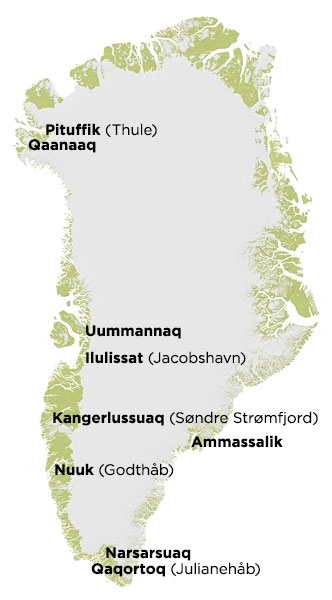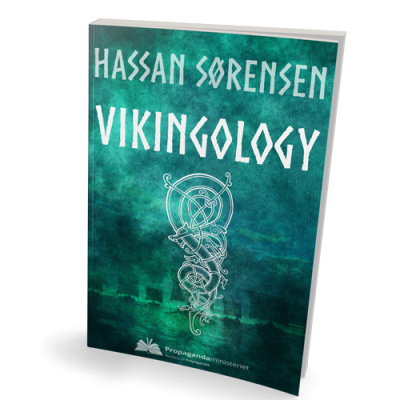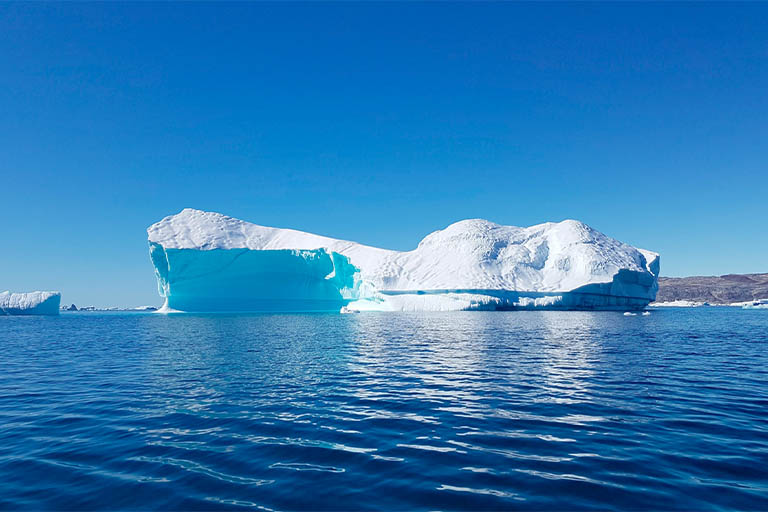
The first inhabitants in north-western Greenland were a variety of ethnic groups coming in from north-eastern Canada.
Here they developed unique dialects, essentially new languages, and a culture of their own.
They still consist of a number of separate cultural groups, but as one they are generally known as Inuit.
“Eskimo” is a colonisers term, and generally seen as racist.
The country they call Kalaallit Nunaat – the land of humans.
Three quarters of Greenland is covered in ice, in some parts three kilometres thick, and liveable areas are scarce and unconnected.
To this day no two towns are connected by roads – and presumably never will be.
Sailing and flying is the only way to get around, unless you have the courage to cross the ice in a snowmobile or dogsled.
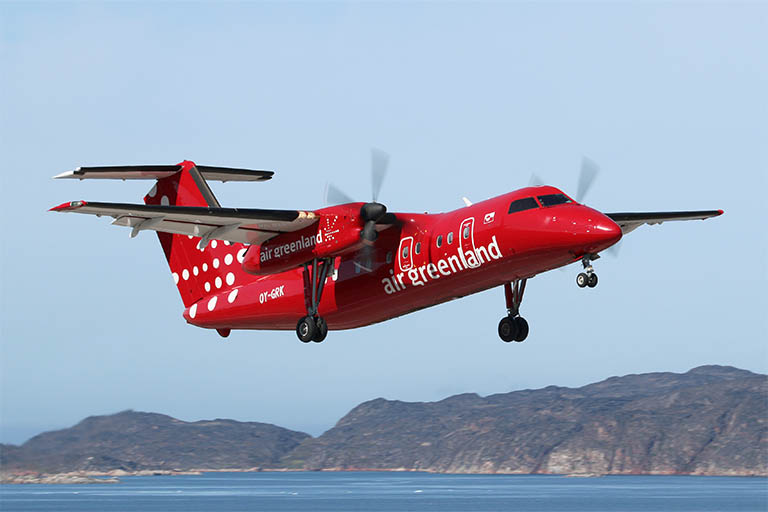
In the warm period, in late Iron Age, Vikings from Iceland discovered Greenland, and small groups established homes, farms and trading stations in the unpopulated southern part of west Greenland.
According to legend it was the murder convicted and exiled Icelander Eirikur “Rauði” Þorvaldsson (Erik the Red) who found and named the island, and made the first Settlement in Brattalið, close to present day Narsarsuaq, in year 985.
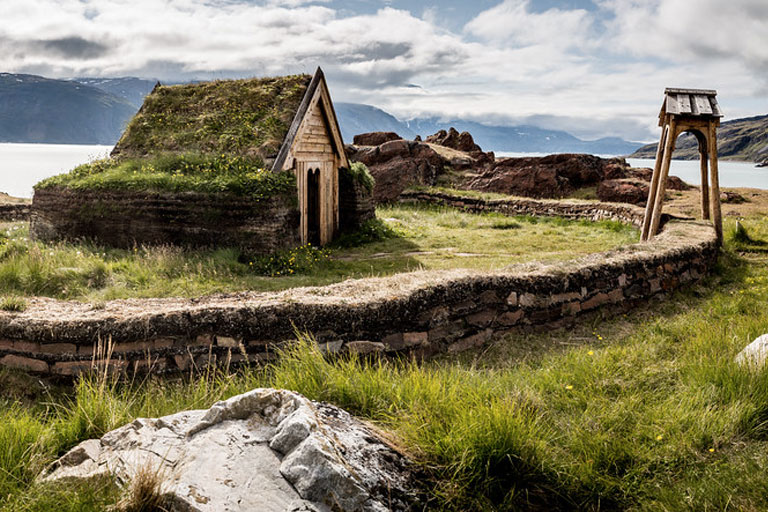
Soon after a new settlement was made in Vestribygð, in the vicinity of present day Nuuk (Godthåb). Vestribygð is quite far north from Brattalið, and slightly to the west, but for some reason they are known as the eastern and western settlement, not the northern and southern.
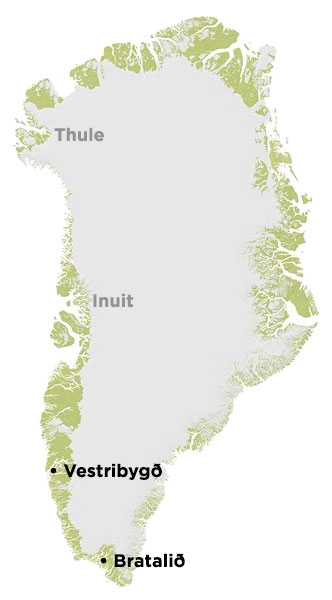
So now there were two groups of people inhabiting the island – the Inuit and the Greenlanders – completely unaware of each other’s existence.
The Inuit lived in a permafrost area, and survived by hunting fish, sea mammals, and the occasional polar bear.
The Greenlanders survived by a little farming (remember this was the warm period), fishing, hunting sea mammals, musk ox, reindeer, and walrus – primarily for exporting tusk ivory to Iceland and Norway, where it could be traded for valuable things not available in the Arctic environment.
Greenland has no trees.
Even the occasional narwhal was a huge catch, not only for the abundance of meat, but the Vikings managed to convince Europeans that the spiralled 1-2 metre long tooth was actually what a unicorn’s horn looked like.

From Greenland the Vikings made expeditions to Canada to fetch timber, wild fruits and other necessities, and even establish permanent settlements, which failed completely after only 15 years.
(You can read more about that in the book Vikingology, in Saga Erikur Rauði and Grænlinga Saga).
But the Viking settlements in Greenland thrived for the next 300 years.
What happened next is not in any Viking sagas, and we are left to guessing, as the mediaeval Inuits left no written account either.
The climate cooled down significantly, making farming impossible.
The plague swept through Europe, killing the vast majority of people in the ports in Norway that usually served the Greenlanders, and stripping them of export customers.
African elephant tusks started flooding into Europe, providing a better quality of ivory than the walrus teeth.
Any one – or more – of these events can explain why we hear no more of the Greenlanders.
As the cold moved south, so did the Inuits, and we have archeological finds that suggest there have been some trading of goods and know-how.
DNA testing reveals that they have not been sharing beds, and the Greenlanders did not blend in with the Inuits.
They are never recorded arriving in any port in Iceland, Faroe Islands, Norway, or anywhere else in northern Europe.
No archeological finds suggest that there has been any kind of conflict, but an Inuit saga tells the story of a massacre, where Inuits completely wiped out an entire Viking settlement or farm.
One controversial theory is that the Vikings – a small fragile group of people – were all taken slaves by pirates from somewhere in southern Europe. Maybe Portugal.
Another wild theory suggests they all took refuge in Canada, giving it an all-or-nothing new attempt, with nothing to lose.
This may sound insane, but in the 1350s a ship arrived in Reykjavik, Iceland, in bad need of repairs, and formally stated their port of origin as “Markland”, which is one of the places in Canada where the Vikings fetched timber.
After the Vikings disappeared the Inuits took permanent residence in many fjords in southern Greenland (or Kalaallit Nunaat).
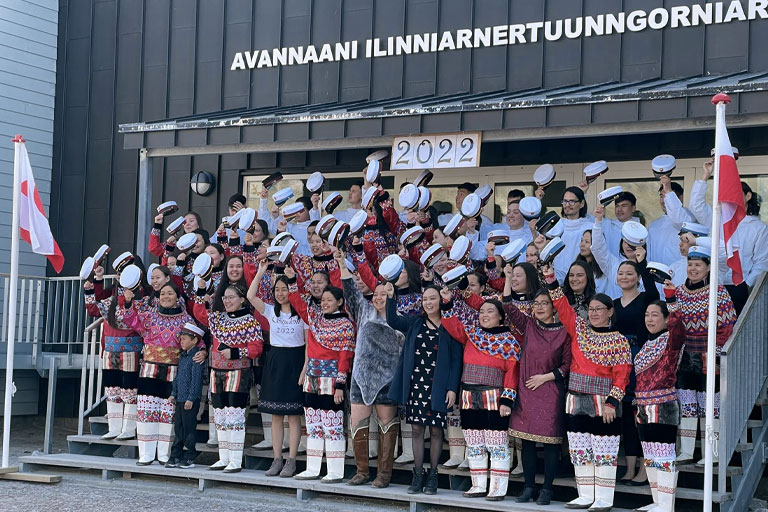
In Denmark-Norway – one unified country at the time – the general idea was that the Viking’s descendants were still alive and kicking in Greenland, but oddly enough not letting their presence be noticed. Maybe to avoid taxation…
In 1721 the priest Hans Egede acquired the King’s permission (and funding) to go to Greenland and find the Vikings. Officially the purpose was to help them out of the delusion of mediaeval christianity (at this point labelled Catholicism) and into the Lutheran faith.
In Greenland he encountered the Inuits, but nothing but abandoned ruins in the Viking settlements.
He established a mission in the Nuuk area, near the abandoned Vestribygð settlement, and started converting Inuits, to the best of his ability.
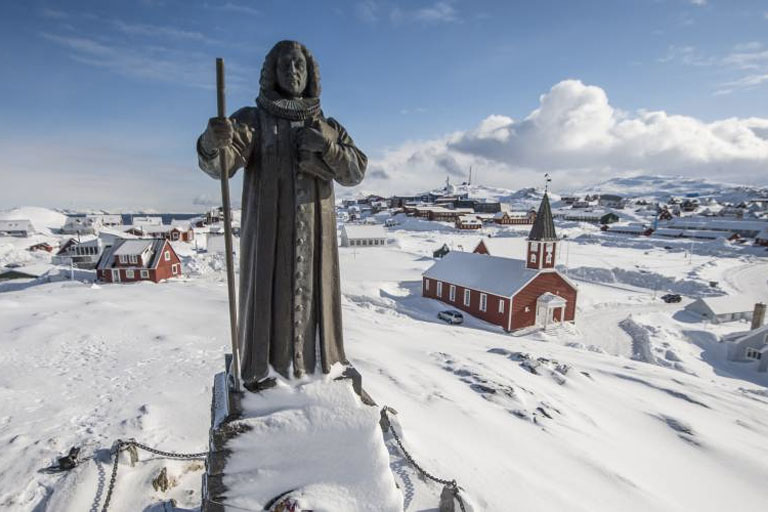
In 1724 all Danes were ordered to leave the island, but Hans and his wife Gertrud chose to stay.
In 1728 the Danish king decided to go all in on Greenland.
The Danish interests in Greenland was, however, neither conversion nor finding the lost Vikings.
It was whaling, which had become enormously profitable in other regions of the world.
Whaling was never really successful, though, and as a consolation prize the focus shifted to seal skin, and training the Inuits to hunt on an industrial scale.
Scandinavians started flooding in, especially from Norway.
These were the next generation Greenlanders.
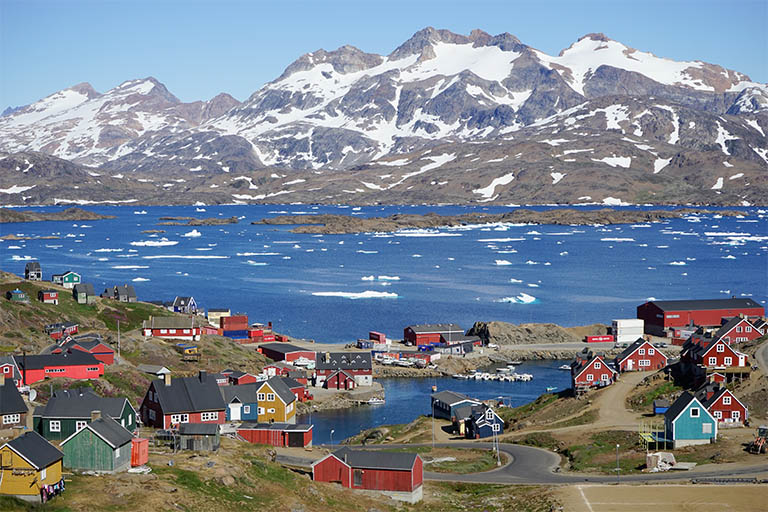
In 1814 the Kiel Treaty determined that the Danish kingdom should hand over the areas in Norway to Sweden, but keep the colonies in the Atlantic: Greenland, Faroe Islands and Iceland, even the vicinity to Norway was more logical, and the population primarily descended from Norwegians.
In 1905 Norway became a sovereign independent state, but that didn’t change anything for the Danish colonies in the north Atlantic ocean.
Iceland became fully independent in 1944, during the second world war.
Due to epidemics, and the general lack of efficiency in hunting and exports, seen from a Danish point of view, it was decided to centralise and comprise the Inuits in fewer and larger towns.
People were persuaded, lured or forced to give up their small settlements in the fjords, scattered all over Greenland, and move to modern apartments in larger towns, especially Nuuk.
Apartments suited for a modern Danish lifestyle.
Butchering a seal in a small modern apartment is difficult, and the landlords are bound to react to the mistreatment of the kitchen floor.
Culture clash one-on-one.
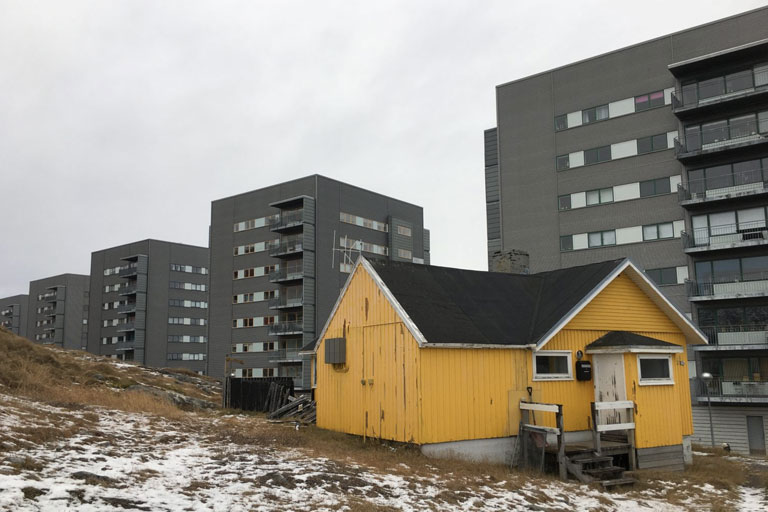
The Inuits are suffering from the suppression of their culture and language.
As one of the few ethnic groups on earth that never invented alcohol, they react strongly to the effects.
Alcohol abuse is a huge problem in Kalaallit Nunaat, as well as suicide.
Sugar was introduced, fast becoming highly popular, and the toothbrush followed after more than a decade.
Now imagine going to your local tax office or your doctor being forced to speak a different language. If you are a native English speaker, but the staff in your municipality only speaks Spanish.
That is the situation for the Inuits, who have no choice but to speak Danish when applying for a building permit or asking for a specification of an electrical bill.
All signs are in both Danish and Kalaallisut, or only in Danish.
Obviously there are strong sentiments towards independence, but a modern lifestyle has been forced upon the Inuits, that makes them dependent on financial subsidies from Denmark.
In 1979 Kalaallit Nunaat gained home rule, and left the European Union, mainly to keep European fishing fleets out of their waters.

Citizens in EU countries are not automatically allowed to settle and work in Greenland, but citizens in Greenland, that are in fact Danish citizens, are allowed to settle and work in EU countries, as Denmark is a member state. That’s one weird complication. Another is that companies in Greenland have Danish VAT numbers, but are not included in the European common market.
In 2009 more authority was added to the autonomy, but international affairs, and negotiating rights to mining the underground is still controlled by Denmark.
Kalaallit Nunaat, just like Faroe Islands, elects two members to the Danish Parliament, out of 179.
Today Greenland is home to 56.000 people, 90% are Inuits, 8% are Greenlanders of Danish/Norwegian descent, and a few percent are foreign workers from Thailand, Philippines and USA (et al).
This makes Greenland the most sparsely permanently populated country on earth.
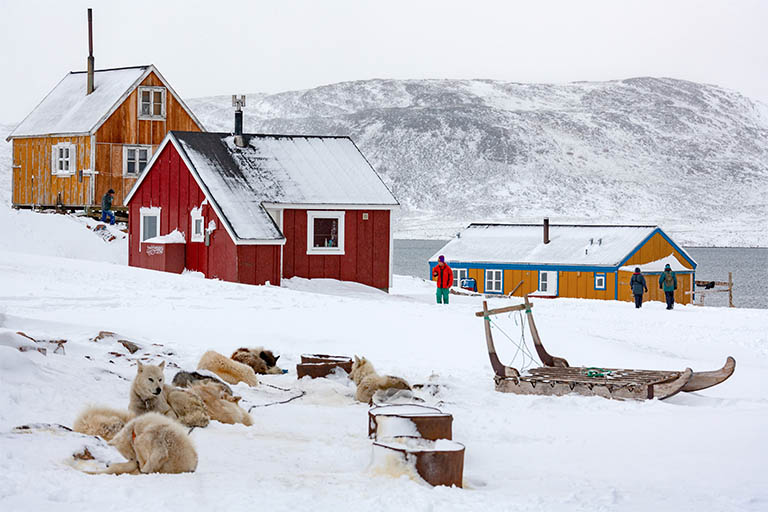
During the second world war Denmark was occupied by Nazi Germany, and the Danish Ambassador in Washington DC chose to go rogue, and gave the US Air Force permission to set up bases in Greenland – in Thule and Sønder Strømfjord (now Kangerlussuaq) and a naval base established close to Ivigtut.
After the war they were permitted to stay, and during the cold war the enormous radars in Thule Air Base were used to gather information about air traffic – and potentially rockets – in the Soviet Union.
In 1959 they created Camp Century, also known as project ice worm, a huge bunker inside the ice cap.
January 21st 1968 a United States Air Force B-52 bomber crashed near Thule Air Base. The aircraft was carrying four thermonuclear bombs when a cabin fire forced the crew to abandon the aircraft before they could carry out an emergency landing. Six crew members ejected safely, but one who did not have an ejection seat was killed. The bomber crashed onto sea ice in North Star Bay, causing the conventional explosives aboard to detonate and the nuclear payload to rupture and disperse, resulting in radioactive contamination of the area.
The United States and Denmark launched an intensive clean-up and recovery operation, but one of the nuclear weapons could not be accounted for after the operation was completed.
Now the US military presence and rhetoric is toned down, and the only remaining airbase, in Thule, is renamed Pituffik Space Base. The Inuits who were forced to move out of their settlement, to make room for the base, have been given a small financial compensation.
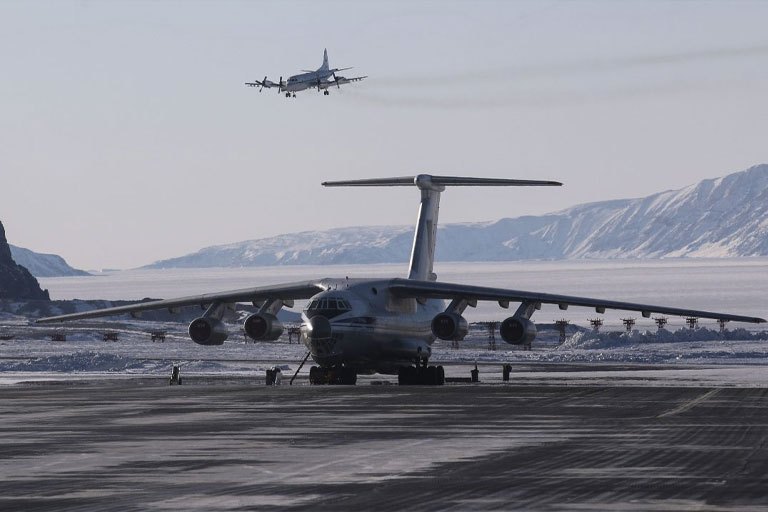
In 2019 US President Donald Trump discussed the idea of buying Greenland from Denmark, and the world was in shock – yet another insane idea from an obviously insane man.
The idea is not as insane as it sounds, however, just a couple of hundred years too late. The USA has actually purchased the US Virgin Islands (formerly Danish West Indies) from Denmark in 1917 for $ 25 million, just like they bought Alaska from Russia, Louisiana from France and California from Mexico.
In 1946, President Harry Truman secretly offered to buy Greenland from Denmark for $100 million worth of gold.
Obviously the population in Kalaallit Nunaat doesn’t want to be incorporated into the USA, but if the offer should one day come from Canada, the sentiments on the island might be slightly different. The geographic and cultural proximity makes it logical, and Greenland needs a larger tight partner – if not a colonial power – to maintain a modern lifestyle in the arctic environment.
There might be enough oil, natural gas, uranium or metals in the underground to create a good income, but it will take a rather overwhelming investment to find and extract it.
Meanwhile Greenland is at the frontline of global climate change, with ice free fjords throughout the winter, a fast melting ice cap, and the arctic wildlife escaping north, or simply disappearing.
Not all bad news, though, as farming is becoming a possibility, like it was when Eirikur “Rauði” Þorvaldsson established Brattalið.
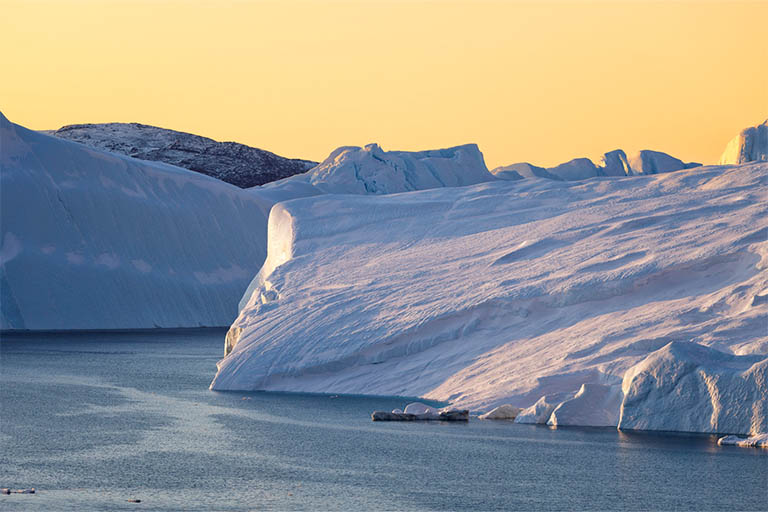
I will end this tale of the Humans’ Land with a funny story.
Hans Island, measuring 1,290 by 1,199 metres, is situated at the border between Greenland’s and Canada’s national waters, and the ownership of this completely uninteresting little rock island could have significance, if something of value should ever be discovered beneath the sea bed.
So Denmark and Canada went to war over it.
The war was fought this way: The Canadian navy would enter the island, remove the Danish flag, and a bottle of Danish schnapps, hoist the Canadian flag and leave a bottle of Canadian Whisky. The Danish Navy would then enter the island, remove the Canadian flag and confiscate the whisky, leave a bottle of schnapps and hoist the Danish flag, and so on, until June 14th 2022, when both countries agreed to split the disputed island roughly in half.
I didn’t think I would ever hear myself say this, but it’s almost a pity the war ended.
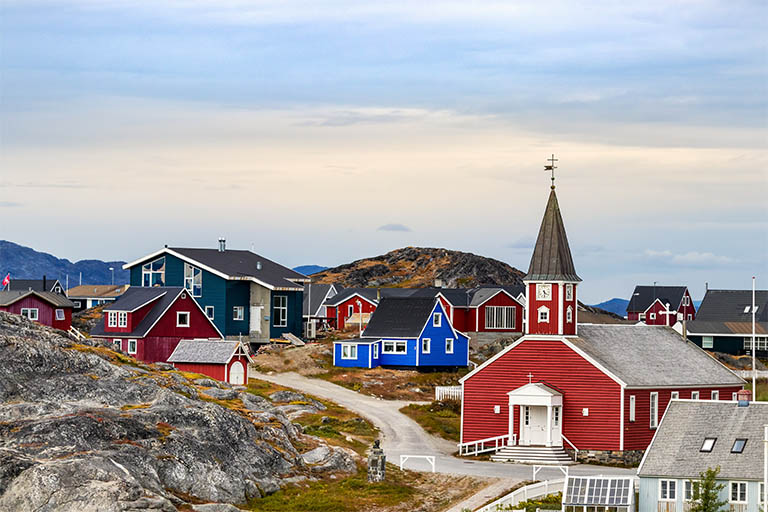
Fun facts:
Kaffeklubben Ø off the northern coast of Greenland is the world’s northernmost undisputed point of land. The name literally means “Coffee Club Island”.
Two inventions, and their names, that have spread from Greenland to the rest of the world, are Anorak and Kayak.
